
- Goose
- Cogito ergo sum
 Offline
Offline 
- Registered: 1/29/2015
- Posts: 13,427
July 4th Thread
Excessively sentimental posts welcome here.
Let's spend a few days focusing on the good.
We live in a time in which decent and otherwise sensible people are surrendering too easily to the hectoring of morons or extremists.
- Goose
- Cogito ergo sum
 Offline
Offline 
- Registered: 1/29/2015
- Posts: 13,427
Re: July 4th Thread
Last edited by Goose (6/28/2017 3:29 pm)
We live in a time in which decent and otherwise sensible people are surrendering too easily to the hectoring of morons or extremists.
- •
- Goose
- Cogito ergo sum
 Offline
Offline 
- Registered: 1/29/2015
- Posts: 13,427
Re: July 4th Thread

John Basilone
(November 4, 1916 – February 19, 1945) was a United States Marine Corps Gunnery Sergeant who was killed in action during World War II. He received the Medal of Honor for heroism above and beyond the call of duty during the Battle of Guadalcanal and the Navy Cross posthumously for extraordinary heroism during the Battle of Iwo Jima. He was the only enlisted Marine to receive both of these decorations in World War II.
He enlisted in the Marine Corps on June 3, 1940, after serving three years in the United States Army with duty in the Philippines. He was deployed to Guantánamo Bay, Cuba, and in August 1942, he took part in the invasion of Guadalcanal. In October, he, and two other Marines manning two other machine guns, held off approximately 3,000 Japanese soldiers until the attack ceased.
In 1943, Basilone returned to the United States and participated in war bond tours. His arrival was highly publicized and his hometown held a parade in his honor when he returned. The homecoming parade occurred on Sunday, September 19 and drew a huge crowd with thousands of people, including politicians, celebrities and the national press. The parade made national news in Life magazine and Fox Movietone News. After the parade, he toured the country raising money for the war effort and achieved celebrity status. Although he appreciated the admiration, he felt out of place and requested to return to the operating forces fighting the war. The Marine Corps denied his request and told him he was needed more on the home front. He was offered a commission, which he turned down, and was later offered an assignment as an instructor, but refused this as well. He requested again to return to the war and this time the request was approved. He left for Camp Pendleton, California, for training on December 27. On July 3, 1944, he reenlisted in the Marine Corps. While stationed at Camp Pendleton, he met his future wife, Lena Mae Riggi, who was a Sergeant in the Marine Corps Women's Reserve.They were married at St. Mary's Star of the Sea Church in Oceanside, on July 10, with a reception at the Carlsbad Hotel. They honeymooned at an onion farm near Portland.
In February 1945, he was killed in action on the first day of the invasion of Iwo Jima, after he single handedly destroyed an enemy blockhouse and led a Marine tank under fire safely through a minefield.
Lena M. Basilone died June 11, 1999, at the age of 86, and was buried at Riverside National Cemetery in Riverside, California. Lena's obituary notes that she never remarried, and was buried still wearing her wedding ring.
Every September Raritan, NJ holds a John Basilone Memorial Parade.
We live in a time in which decent and otherwise sensible people are surrendering too easily to the hectoring of morons or extremists.
- •
- Goose
- Cogito ergo sum
 Offline
Offline 
- Registered: 1/29/2015
- Posts: 13,427
Re: July 4th Thread
Today, polio is a fading memory.
It was once a terror to parents all over the world.
Jonas Edward Salk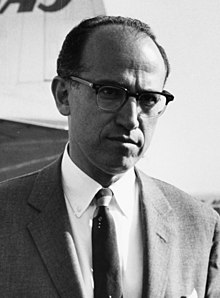
Jonas Salk was an American medical researcher and virologist. He discovered and developed one of the first successful polio vaccines. Born in New York City, he attended New York University School of Medicine, later choosing to do medical research instead of becoming a practicing physician. In 1939, after earning his medical degree, Salk began an internship as a scientist physician at Mount Sinai Hospital. Two years later he was granted a fellowship at the University of Michigan, where he would study flu viruses with his mentor Thomas Francis, Jr..
Until 1955, when the Salk vaccine was introduced, polio was considered one of the most frightening public health problems in the world. In the postwar United States, annual epidemics were increasingly devastating. The 1952 U.S. epidemic was the worst outbreak in the nation's history. Of nearly 58,000 cases reported that year, 3,145 people died and 21,269 were left with mild to disabling paralysis, with most of its victims being children. The "public reaction was to a plague", said historian William L. O'Neill. "Citizens of urban areas were to be terrified every summer when this frightful visitor returned." According to a 2009 PBS documentary, "Apart from the atomic bomb, America's greatest fear was polio." As a result, scientists were in a frantic race to find a way to prevent or cure the disease. In 1938, U.S. President Franklin D. Roosevelt, the world's most recognized victim of the disease, had founded the National Foundation for Infantile Paralysis (known as March of Dimes Foundation since 2007), an organization that would fund the development of a vaccine.
In 1947, Salk accepted an appointment to the University of Pittsburgh School of Medicine. In 1948, he undertook a project funded by the National Foundation for Infantile Paralysis to determine the number of different types of polio virus. Salk saw an opportunity to extend this project towards developing a vaccine against polio, and, together with the skilled research team he assembled, devoted himself to this work for the next seven years. The field trial set up to test the Salk vaccine was, according to O'Neill, "the most elaborate program of its kind in history, involving 20,000 physicians and public health officers, 64,000 school personnel, and 220,000 volunteers." Over 1,800,000 school children took part in the trial. When news of the vaccine's success was made public on April 12, 1955, Salk was hailed as a "miracle worker" and the day almost became a national holiday.
Last edited by Goose (6/29/2017 5:13 am)
We live in a time in which decent and otherwise sensible people are surrendering too easily to the hectoring of morons or extremists.
- •
- Goose
- Cogito ergo sum
 Offline
Offline 
- Registered: 1/29/2015
- Posts: 13,427
Re: July 4th Thread
Virginia Apgar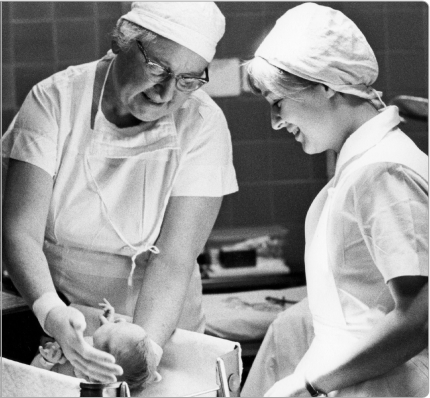
Every year, thousands of at-risk babies are saved, thanks to the development of a test assessing the physical condition of newborns created by Dr. Virginia Apgar.
Born in Westfield, New Jersey, on June 7, 1909, to Helen Clark Apgar and Charles Emory Apgar, Virginia was the youngest of three children. From an early age, Virginia knew that she wanted to be a part of the medical field, in part due to the death of her eldest brother at the age of three.
Apgar entered Mount Holyoke College in 1925 on a scholarship to study zoology. Much of her free time was spent in the college orchestra, playing violin and cello. In 1929 she graduated from Mount Holyoke and entered the College of Physicians and Surgeons at Columbia University. In 1933, Apgar graduated fourth in her class and won a surgical internship at Columbia Presbyterian Hospital (CBH). She served three years under Allen Whipple, who persuaded her to switch to anesthesiology.
Between 1936 and 1938 Apgar studied anesthesiology from nurses at Columbia Presbyterian and completed her residency at the University of Wisconsin, Madison, and Bellevue Hospital in New York. In 1939 she became certified by the American Society of Anesthesiologists and was appointed Anesthesiologist-in-chief at the Columbian Presbyterian Hospital. She was only the second woman in history to receive certification and the first to head a department at CPH.
In 1948 CPH established the Department of Anesthesia, and Apgar left her administrative duties to work more closely with patients. Shortly after, she was appointed Professor of Anesthesiology at the College of Physicians and Surgeons at Columbia University. It was at this time that she began to work in obstetric anesthesiology at the Sloane Hospital for Women.
Apgar spent the next few years perfecting a scoring system known as the Apgar Score. This system evaluates a newborn's transition into the world by measuring five items: heart rate, respiratory effort, muscle tone, reflex response and color. By using that method, physicians and nurses could assess whether or not a newborn needed emergency medical attention. In 1952 the score was presented to the medical board, and it was published in 1953. The score is now standard in all hospitals throughout the world.
We live in a time in which decent and otherwise sensible people are surrendering too easily to the hectoring of morons or extremists.
- •
- Goose
- Cogito ergo sum
 Offline
Offline 
- Registered: 1/29/2015
- Posts: 13,427
Re: July 4th Thread
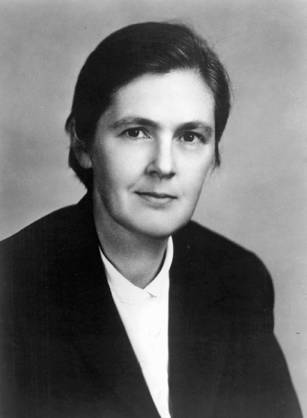
Frances Oldham Kelsey
As a reviewer for the U.S. Food and Drug Administration (FDA), Kelsey refused to authorize the drug thalidomide for market because she had concerns about the drug's safety. Her concerns proved to be justified when it was shown that thalidomide caused serious birth defects. Kelsey's career intersected with the passage of laws strengthening FDA oversight of pharmaceuticals. Kelsey was the second woman to be awarded the President's Award for Distinguished Federal Civilian Service by President John F. Kennedy.
Thalidomide was a drug first marketed in 1957 in West Germany under the trade-name Contergan. The German drug company Chemie Grünenthal developed and sold the drug. Primarily prescribed as a sedative thalidomide also claimed to cure "anxiety, insomnia, gastritis, and tension". Afterwards, it was used against nausea and to alleviate morning sickness in pregnant women. Thalidomide became an over-the-counter drug in West Germany on October 1, 1957. Shortly after the drug was sold in West Germany, between 5,000 and 7,000 infants were born with phocomelia (malformation of the limbs). Only 40% of these children survived.
In the U.S., representatives from Chemie Grünenthal approached Smith, Kline & French (SKF), now GlaxoSmithKline (GSK) with a request to market and distribute the drug in North America.
The U.S. FDA refused to approve thalidomide for marketing and distribution. However, the drug was distributed in large quantities for testing purposes, after the American distributor and manufacturer Richardson-Merrell had applied for its approval in September 1960.
The official in charge of the FDA review, Frances Oldham Kelsey, did not rely on information from the company, which did not include any test results. Richardson-Merrell was called on to perform tests and report the results. The company demanded approval six times, and was refused each time.
For correctly denying the application despite the pressure from Richardson-Merrell, Kelsey eventually received the President's Award for Distinguished Federal Civilian Service at a 1962 ceremony with President John F. Kennedy.
In September 2010, the FDA honored Kelsey with the first Kelsey award. The award, given annually to an FDA staff member, came 50 years after Kelsey, then a new medical officer at the agency, first reviewed the application from the William S. Merrell Company of Cincinnati. Cardiologist Helen B. Taussig learned of the damaging effects of the drug thalidomide on newborns and in 1967, testified before Congress on this matter after a trip to Germany where she worked with infants with phocomelia (severe limb deformities).
As a result of her efforts, thalidomide was banned in the United States and Europe.
We live in a time in which decent and otherwise sensible people are surrendering too easily to the hectoring of morons or extremists.
- •
- tennyson
- Exchanger
 Offline
Offline 
- Registered: 2/06/2015
- Posts: 6,654
Re: July 4th Thread

"Do not confuse motion and progress, A rocking horse keeps moving but does not make any progress"
- Goose
- Cogito ergo sum
 Offline
Offline 
- Registered: 1/29/2015
- Posts: 13,427
Re: July 4th Thread
The Four Chaplains
The Four Chaplains, also sometimes referred to as the "Immortal Chaplains" or the "Dorchester Chaplains", were four United States Army chaplains who gave their lives to save other civilian and military personnel as the troop ship SS Dorchester sank on February 3, 1943, during World War II. They helped other soldiers board lifeboats and gave up their own life jackets when the supply ran out. The chaplains joined arms, said prayers, and sang hymns as they went down with the ship.
The relatively new chaplains all held the rank of first lieutenant. They included Methodist minister the Reverend George L. Fox, Reform Rabbi Alexander D. Goode (Ph.D.), Roman Catholic priest Father John P. Washington, and Reformed Church in America minister the Reverend Clark V. Poling. Their backgrounds, personalities, and denominations were different, although Goode, Poling and Washington had all served as leaders in the Boy Scouts of America. They met at the Army Chaplains School at Harvard University, where they prepared for assignments in the European theater, sailing on board Dorchester to report to their new assignments in Guatemala.
Dorchester left New York on January 23, 1943, en route to Greenland, carrying the four chaplains and approximately 900 others, as part of a convoy of three ships (SG-19 convoy). Most of the military personnel were not told the ship's ultimate destination. The convoy was escorted by Coast Guard Cutters Tampa, Escanaba, and Comanche.
The ship's captain, Hans J. Danielsen, had been alerted that Coast Guard sonar had detected a submarine. Because German U-boats were monitoring sea lanes and had attacked and sunk ships earlier during the war, Captain Danielsen had the ship's crew on a state of high alert even before he received that information, ordering the men to sleep in their clothing and keep their life jackets on. "Many soldiers sleeping deep in the ship's hold disregarded the order because of the engine's heat. Others ignored it because the life jackets were uncomfortable."
During the early morning hours of February 3, 1943, at 12:55 a.m., the vessel was torpedoed by the German submarine U-223 off Newfoundland in the North Atlantic.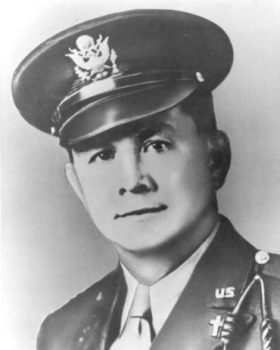

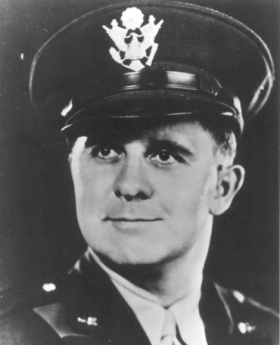
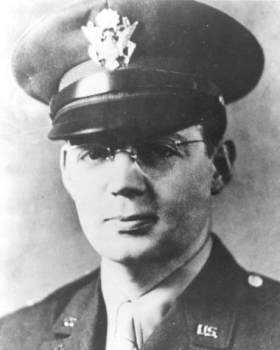
The torpedo knocked out the Dorchester's electrical system, leaving the ship dark. Panic set in among the men on board, many of them trapped below decks. The chaplains sought to calm the men and organize an orderly evacuation of the ship, and helped guide wounded men to safety. As life jackets were passed out to the men, the supply ran out before each man had one. The chaplains removed their own life jackets and gave them to others. They helped as many men as they could into lifeboats, and then linked arms and, saying prayers and singing hymns, went down with the ship.
As I swam away from the ship, I looked back. The flares had lighted everything. The bow came up high and she slid under. The last thing I saw, the Four Chaplains were up there praying for the safety of the men. They had done everything they could. I did not see them again. They themselves did not have a chance without their life jackets.
— Grady Clark, survivor
Last edited by Goose (7/02/2017 1:34 pm)
We live in a time in which decent and otherwise sensible people are surrendering too easily to the hectoring of morons or extremists.
- •
- Tarnation
- Administrator
 Offline
Offline - From: Upstream where water's clean
- Registered: 1/29/2015
- Posts: 1,237
Re: July 4th Thread
My grandfather was the President of the York City School Board at the time of the construction of the Alexander B. Goode Elementary School.
The lobby of the school has huge mural made of ceramic tile depicting these Chaplains preparing to offer their ultimate sacrifice.
When I was a youngster my randfatehr would take me to see that mural at least once a year, and tell their story.
Veschnya Pamjat--Memory Eternal!
Life is an Orthros.
- Conspiracy Theory
- Dark Overlord
 Offline
Offline - From: Earth
- Registered: 1/30/2015
- Posts: 1,396
Re: July 4th Thread
Goose wrote:
The Four Chaplains
The Four Chaplains, also sometimes referred to as the "Immortal Chaplains" or the "Dorchester Chaplains", were four United States Army chaplains who gave their lives to save other civilian and military personnel as the troop ship SS Dorchester sank on February 3, 1943, during World War II. They helped other soldiers board lifeboats and gave up their own life jackets when the supply ran out. The chaplains joined arms, said prayers, and sang hymns as they went down with the ship.
The relatively new chaplains all held the rank of first lieutenant. They included Methodist minister the Reverend George L. Fox, Reform Rabbi Alexander D. Goode (Ph.D.), Roman Catholic priest Father John P. Washington, and Reformed Church in America minister the Reverend Clark V. Poling. Their backgrounds, personalities, and denominations were different, although Goode, Poling and Washington had all served as leaders in the Boy Scouts of America. They met at the Army Chaplains School at Harvard University, where they prepared for assignments in the European theater, sailing on board Dorchester to report to their new assignments in Guatemala.
Dorchester left New York on January 23, 1943, en route to Greenland, carrying the four chaplains and approximately 900 others, as part of a convoy of three ships (SG-19 convoy). Most of the military personnel were not told the ship's ultimate destination. The convoy was escorted by Coast Guard Cutters Tampa, Escanaba, and Comanche.
The ship's captain, Hans J. Danielsen, had been alerted that Coast Guard sonar had detected a submarine. Because German U-boats were monitoring sea lanes and had attacked and sunk ships earlier during the war, Captain Danielsen had the ship's crew on a state of high alert even before he received that information, ordering the men to sleep in their clothing and keep their life jackets on. "Many soldiers sleeping deep in the ship's hold disregarded the order because of the engine's heat. Others ignored it because the life jackets were uncomfortable."
During the early morning hours of February 3, 1943, at 12:55 a.m., the vessel was torpedoed by the German submarine U-223 off Newfoundland in the North Atlantic.
The torpedo knocked out the Dorchester's electrical system, leaving the ship dark. Panic set in among the men on board, many of them trapped below decks. The chaplains sought to calm the men and organize an orderly evacuation of the ship, and helped guide wounded men to safety. As life jackets were passed out to the men, the supply ran out before each man had one. The chaplains removed their own life jackets and gave them to others. They helped as many men as they could into lifeboats, and then linked arms and, saying prayers and singing hymns, went down with the ship.
As I swam away from the ship, I looked back. The flares had lighted everything. The bow came up high and she slid under. The last thing I saw, the Four Chaplains were up there praying for the safety of the men. They had done everything they could. I did not see them again. They themselves did not have a chance without their life jackets.
— Grady Clark, survivor
I went to Goode's namesake elementary school in York
If you make yourself miserable trying to make others happy that means everyone is miserable.
-Me again
---------------------------------------------
 1
1